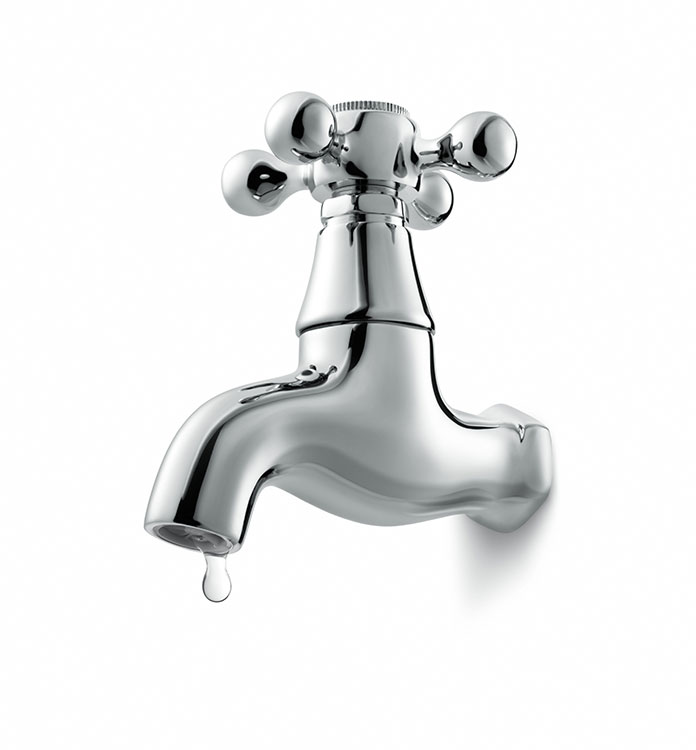
Let’s be honest; most of us take little notice of how excessively we use water with many of us wastefully using up to 25 gallons a day.
That level of water usage soon starts to increase when you start adding on an extra 25 gallons for every family member living in the same household.
If you tried to drink 25 gallons of water, even over the course of a day, you would fail miserably, never mind that to do so is extremely dangerous and something we would advise against even trying!
That is why a large part of those 25 gallons is not for drinking but for a number of different tasks.
Primarily; washing, cleaning, cooking, and flushing.
As well as taking the seemingly endless supply of fresh, clean drinking water to our homes somewhat for granted we also tend to forget how it actually arrives there.
Electricity powers our world including all the systems used for pumping water to our homes.
Even households that are lucky enough to have access to well water are more often than not reliant on electricity to get to it via a well pump.
When an emergency situation occurs, the power grid is often the first thing that will go down, quickly followed by your water supply, which also happens to include sanitation.
Even if you still have running water it may well be contaminated and therefore unusable.
So, if you are facing the prospect of surviving a crisis type emergency situation during which your electricity and water supply is cut off, then water storage becomes, not only prudent but quite possibly a matter of life and death!
So where do you start?
Water Storage – How much do you need to store?
There are a number of conflicting points of view about the correct amount of emergency drinking water that should be stored in preparation for an emergency.
However, the actual amount of water required per person per day has never been in question.
Most experts agree that a gallon of water a day is the amount that should be stored for each person in an emergency household plan.
In fact, an averagely active person in a temperate climate will only need about three quarts of water a day.
Age, fitness, diet, health, nursing mothers, excessive activity, and hotter temperatures will all effectively increase this requirement, hence why a gallon is generally used as the benchmark.
Coming back to the main issue of; how many days of water should you store?
In our opinion, far too many experts advise that you should be storing enough water for three days; which equates to 3 gallons for each person in your household.
This would mean that for a family of 4 you would need to store 12 gallons of water for example.
Now that’s all well and good but our problem is with accepting the three-day storage advice.
Although storing enough water for three days is better than not storing any water at all, we believe it will fall woefully short of what you will actually end up needing.
Advising people to store enough water for only three days, is asking them to put their complete trust in the authorities.
By trust, we mean the authorities have to get the power grid back up and running and restore a clean water supply before your three days’ worth of water supplies are gone!
Now, we don’t want to seem pessimistic, but we struggle with a promise that electricity and water would be back online in three days.
The level of confidence shown by those in authority is commendable but in our view, misguided!
We CERTAINLY wouldn’t risk our survival on the advice of those in authority when history has proven that the advice they have given to be more often wrong than right, time after time.
We believe it would be far more sensible to store at least a two weeks supply of emergency water.
This would obviously mean having to store far more water, 56 gallons for a family of four.
If you have the storage space to store even more then go for it, it is always better to have more than you need, than to not have enough.
For some households storage space will not be an issue, for others, such as those living in apartments, storing larger quantities of water can become a little more problematic but not completely out of the question.
It may need you to do some thinking outside the box, but in most cases, there is always a solution.
Best Options for Storing a 2 Week Emergency Water Supply
Storing a two week supply of water isn’t that difficult for most people with regards to the volume of water needed and the storage space required.
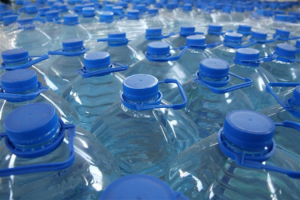
Bottled water comes in all shapes and sizes so it’s easy to find packs that fit the space you have available, whether that space is under your bed, at the back of your wardrobe, or even under your floorboards!
Other benefits of buying bottled water, is that the water is already in well-sealed food-grade plastic bottles that are easily portable and above all else, clean!
There is one thing that should be noted with regards to storing pre-packed bottled water.
Stock rotation!
There has been considerable concern over the last few years about BPA in some plastic bottles contaminating water which is covered in greater detail further down this article.
Regularly renewing your pre-packed water store would seem to be the logical way to avoid any issues if BPA contamination is of concern to you.
There’s no reason why you even have to buy bottled water if you are trying to keep your prepping costs down; simply collect some empty water or soda bottles and repurpose them.
As long as they are cleaned thoroughly before being filled with clean water, you’ll be good to go.
Alternatively, you could use the dark blue stack-able water jugs that many people use on camping trips.
These containers can hold between 3 to 7 gallons of water and there are a number of different sizes and shapes available.
You should be able to find the perfect size for the space you have available for water storage.

Another great idea for storing enough water for a 2 week supply is to use a water bladder.
If you have enough warning, filling a bathtub with water before an imminent crisis has always been sound advice.
However, it doesn’t matter how clean you like to think your bathtub is it is never going to be completely sterile.
Certainly not sterile enough for storing drinking water.
Plus it’s practically impossible to seal your tub to keep your water safe from any potential contaminants like insects for example.

The WaterBOB is a brilliant but extremely simple idea that will allow you to quickly create sealed water of up to 100 gallons, perfect for an extended emergency.
There are also a couple of other options that are good for storing smaller amounts of water making them ideal for short-term water storage.
They are glass bottles and stainless steel flasks.
Glass Water Storage Containers
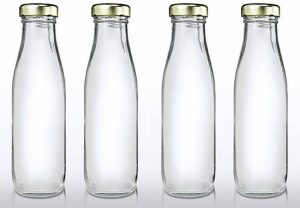
However, as well as the disadvantages of weight and fragility mentioned above there are also some other issues with using glass containers.
Although you can buy glass containers that are square (flat-sided) they will be considerably more expensive than the usual round shaped bottles.
This means that unless you buy the square bottles more space will be required for storage.
The other issue with glass containers is that they shouldn’t be used for storing water if they have been used for storing anything else, which, in all fairness, is no different from any other container option mentioned in this article.
The benefits of glass bottles are they are very easy to sterilize and if looked after properly, they will last indefinitely,
 Stainless Steel Water Storage Containers
Stainless Steel Water Storage Containers
If you are looking for a way to store water long term without the worry of chemicals leaching into your valuable supply then you should consider stainless steel.
Not only do stainless steel containers offer storage free of possible chemical contamination they also protect your supply from the possible harmful effects of sunlight.
However, there are a few drawbacks with stainless steel.
Stainless steel containers are MUCH heavier than their plastic counterparts and cannot be filled with tap water treated with chlorine.
Chlorine treated water will cause a stainless steel container to corrode which in turn will make any water stored in it undrinkable.
Finally, if you’re still considering stainless steel you had better have a good-sized budget available as they’re not cheap as you’ll see if you have a look at this 55-gallon stainless steel container/drum.
The BPA Issue

We are aware that many people reading this post may be concerned about bisphenol A (BPA), and to be honest, there is certainly some strong evidence to back up their concerns.
Personally, we believe you would be in far greater danger from people who want your water than you ever would be from water stored in a plastic bottle containing BPA.
In a survival situation, BPA water contamination isn’t something we at Alpha Survivalist would be overly-concerned with, staying alive is.
However, we do know it’s important to many of our readers, and that is why we are covering BPA here.
BPA is an industrial chemical used in the production of plastic containers, these containers are regularly used in the food and beverage industry, this includes some plastic bottles used for drinking water.
With that in mind, we would advise anyone who has concerns about BPA to:
- Only store filtered water in BPA-free containers.
- Don’t buy pre-bottled water in plastic bottles.
- Also, and this is very important, you should always store your water cache in a location that is both cool and dark.
- Once stored, you should check your emergency water supply frequently, at least every 6 months, checking for any leakages, and if it has been compromised in any way.
What ‘Not’ to Store Water In
There is not much use in having an emergency water supply if it is unfit to drink.
This is why there are certain items that should never be used for storing water for the long term.
And some that should never be used for water storage at all!
- Non-Food Grade plastic containers are perfectly fine for drinking water out of but not for storing water in. All plastic containers should have a triangular recycling symbol that has a number in the middle of it. Plastic containers that have any number other than 1, 2, 4, or 7 should ‘NOT’ be used for storing water. If no symbol is found then presume the container unfit for storing water. Nor should you use a compatible food grade container for water storage if it has been used for storing any other type of foodstuff or liquid.
- Never store water in metal containers other than those made from stainless steel.
- Any container that could potentially become contaminated should not be used.
Whatever you decide to store your water in, always make sure it is stored somewhere cool if possible, and definitely out of direct sunshine.
Long Term Water Storage Tanks for Emergencies
We have already covered how to store enough water for at least a short two-week emergency supply, but what about the long term?
Before you look at different storage options there are a number of factors that must be considered first that will have a bearing on any decision you make.
They are;
- Available space: Although we have already mentioned storage space, it is of even greater importance when you are planning to store greater quantities as would be required for long term survival. It’s not just the amount of space but the shape of it too. Irregular spaces are often difficult to use, but storage options such as the previously mentioned Waterbrick are ideal for such spaces.
- Budget: If you are lucky enough to have bottomless pockets then a custom-made solution is attainable. If you are like most other preppers you will only have a certain amount of cash to throw at a solution which will obviously limit your choices. Good water storage needn’t cost a fortune when done correctly.
- Numbers: Obviously, the number of people your supply is to serve, the more water you will need to store.
- Timescale: The length of time your supply is to cover for a specific number of people will dictate how much space you will need for storage and how many containers you will need to buy. Alternatively, the length of time your water store will cover will not be dictated by you but by the space you have and the budget you have available!
- Other Water Sources: If you have access to alternative water sources such as a well or a swimming pool for example (more on those later), it will have an impact on the amount of water you need to store.
Once you have determined your specific parameters then you will have a clear idea of what you need to look for.
If you want to plan long-term water storage then you need to use potable water storage tanks that have been designed specifically for that purpose.
There are a number of suitable storage options available for long term water storage the most widely used of which is the:
Food Grade Plastic Container
Food Grade Plastic containers are the most popular choice for people who need short or long-term water storage containers.
This is due to the fact that they are extremely lightweight, durable, and affordable.
Although deemed safe to use for water storage there is some concern over chemical leeching, particularly when the containers are exposed to heat or direct light.
There are many different types of plastic water containers but the ‘crème de la crème‘ is definitely the WaterBrick which we mentioned earlier and you can read more about it here.
 55 Gallon Water Barrels
55 Gallon Water Barrels
The next step up, volume-wise, would be to use 55 Gallon food-grade plastic water barrels.
They are obviously bigger and therefore heavier so once they are full they are very difficult to move around
This is why ensuring your water barrels are located in the perfect spot is so important.
The perfect location should be somewhere that is both cool and dark, or at least out of direct sunshine.
Large Water Storage Containers
The final water storage option is plastic water tanks, or cisterns as they are also known.
These large water tanks are the perfect choice for the serious homesteader.
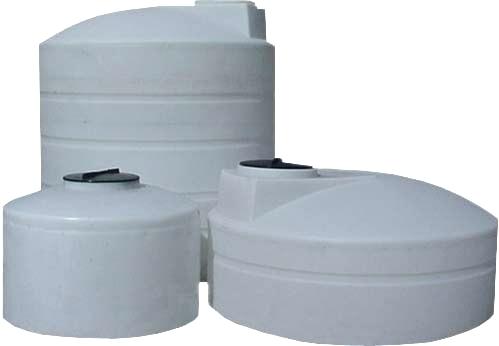
There are many different materials used in the manufacture of plastic water tanks so be sure to check that the tank you are considering is FDA approved.
In other words, make sure it’s safe to store water in!
There are two main types of water tanks; those designed for use above ground and those that are specifically designed to be buried underground.
A water storage tank is certainly a great option for the homesteader, but it can be expensive.
Researching the type and size of the water tank needed is extremely important.
You will need to find the storage tank that is best suited to your regional climate and to your exact water requirements.
Failing to make the right choice could be a costly mistake.
Alternative Water Sources that Impact Your Water Storage Requirements
There are a few things that will help minimize the amount of water you would eventually need to store, and we’ll cover them briefly here.
 Hot Water Heater Tank
Hot Water Heater Tank
Most people overlook the fact that most homes have an established water reservoir in their homes in the shape of their water heater.
Depending on the size of the tank your home has there could be anything from twenty to eighty gallons of clean water permanently stored and refreshed on a near-constant basis right up until your water is cut of.
Swimming Pools

However, it must be remembered that once the power goes off so too do the pool pumps and filters.
A pool can go bad very quickly in hot weather, especially without an operating filtration system.
In this scenario, it doesn’t take too long before the pool water is unfit for drinking.
Nevertheless, you will still have a large water source that can be used for purposes other than cooking and drinking without treatment.
Your pool water can still be used for drinking and cooking as long as it is purified first, you can find more information about water purification by reading our article: ‘How to Purify Water – Making Water Safe to Drink’
 Water Wells
Water Wells
If you are lucky enough to have a well then you are in a great position should your mains water supply be cut off.
Wells are a great source of freshwater but retrieving the water from a well is difficult if there is no power and you have fully mechanized your system.
If you have a well, always ensure you have a way to retrieve water manually,
If you haven’t already got a well on your land you could always look into the possibility of drilling one, it could be the best decision you ever make!
Important things to Remember about Water Storage
Water Rotation
When storing water for your survival it is vitally important not to simply store and forget.
Water can and does turn bad, even if you think you have taken every precaution to stop it from happening.
We mentioned it earlier in this article but rotating your stock is vitally important.
You should never have water stored that is older than a year old.
The chances are that even after a year your water would still be good to drink, but when it comes to survival is it really worth the risk?
Water Filtration and Purification
Although in most cases your water will be perfectly fine to drink, if you are even the slightest bit paranoid, you can always incorporate a water filtration and purification regimen into your water survival plan.
As mentioned earlier, we have recently posted a complete guide to purifying water which covers pretty much every method of filtration and purification you could use to ensure you have the safest and cleanest drinking water possible, with the exception of desalination.
You can read that post here.
Water Taste
You may experience a bad taste sometimes when drinking your stored water.
Usually, this is nothing to be overly concerned with.
When the water has been stored for a long time and hasn’t been moved during that time it tends to de-oxygenate which makes the water taste differently.
Simply rectify by swishing the water about a little this will re-oxygenate it.
Care should be taken however if your water tastes and smells pretty bad as this is a sign that the water has gone bad and isn’t just a case of water going flat.
There are no circumstances that drinking foul-smelling water without purifying it is advisable.
Wrapping Up Water Storage…
Water storage in preparedness for emergencies is, without doubt, the most important part of any home survival plan.
Don’t be the guy dying of thirst because he has spent all his budget on guns and tactical clothing instead of on water preps!
If you liked our article on water storage please link to it, thank you!


 Stainless Steel Water Storage Containers
Stainless Steel Water Storage Containers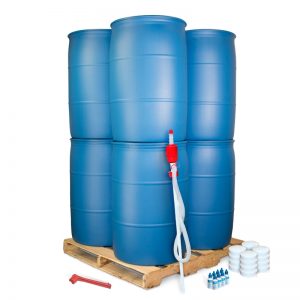 55 Gallon Water Barrels
55 Gallon Water Barrels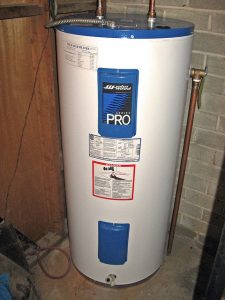 Hot Water Heater Tank
Hot Water Heater Tank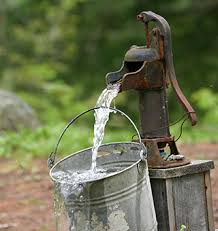 Water Wells
Water Wells
“..harmful effects of sunlight”
Exactly what harm would sunlight do? Unless bacteria already exists inside the supposed sealed bottle, the light should have no effect, especially if the bottle is stored in side, away from any windows…
Thanks for comment Vocal Patriot,
Sunlight itself doesn’t pose any immediate risk to your stored water, and can actually be used to purify water in bottles as I’m sure you are aware. We do mention the issues with BPA and the fact that sunlight can cause it to leach into the water in the article but we also state that we are not overly concerned about it, mainly due to the levels of toxicity involved, which are minute!
But, you’re absolutely right when you touch on bacteria. The energy it draws from natural sunlight does cause increased and rapid growth so perhaps we should have made that point more clearly.
We also take on board what you said about the fact a bacterial issue shouldn’t really be an issue with a sealed bottle ie sterile.
Unfortunately, as hard as any of us try none of us can be 100% sure our stored water is completely free of any contamination, including bacterial, even if it has been bought presealed.
I don’t know about you, but I’ve never seen how clean or unclean the production plants are where these bottles are filled and sealed, but I have seen pallets of them left outside supermarket loading bays with all God’s little creatures crawling and landing on them!
Being unable to completely rule out any presence of bacteria in our water store means we would always advise that it is better to keep water supplies out of direct sunlight and any possible harmful effects doing so may cause.